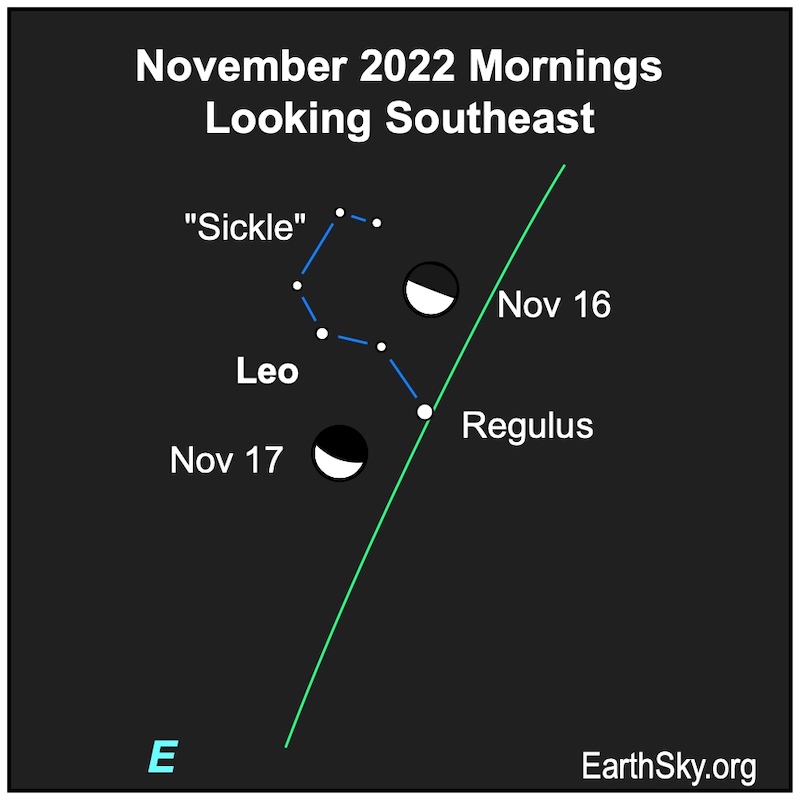
Visible planets (evening)
Saturn is high in the sky after sunset – golden in color, shining steadily – perfect for observing in the evening.
Jupiter is easy to spot, brighter than all the stars. It’s high in the east after sunset, and sets earlier each night – after midnight – throughout the month.
Mars rises in the east a few hours after sunset. It’s very red now and brighter than most stars, racing towards its December 8 opposition, when Earth will fly between Mars and the sun.
Visible planets (morning)
On November mornings, Mars is shining brightly in the west (direction opposite the sunrise horizon).
Where are Venus and Mercury?
Venus, the brightest planet and next planet inward from Earth in orbit around the sun – went behind the sun as seen from Earth on October 22. So, Venus is hidden in the sun’s glare now. Later, it’ll return to our evening sky before the year ends.
Mercury is lost in morning light early November and then is barely visible after twilight at month’s end. Also, Mercury goes behind the sun as seen from Earth on November 8.

Before you begin
People often ask if our charts apply to them. Yes, if you’re in the Northern Hemisphere. Not as precisely, if you’re in the Southern Hemisphere. Our charts are mostly set for the northern half of Earth. To see a precise view from your location, try Stellarium Online.
Looking for a dark sky? Try EarthSky’s Best Places to Stargaze
In this article:
- Night sky guide November 2022
- November-December 2022 heliocentric solar system
- Some resources to enjoy
Visible planets and night sky guide November, 2022
November, nightfall to dawn: Mars!
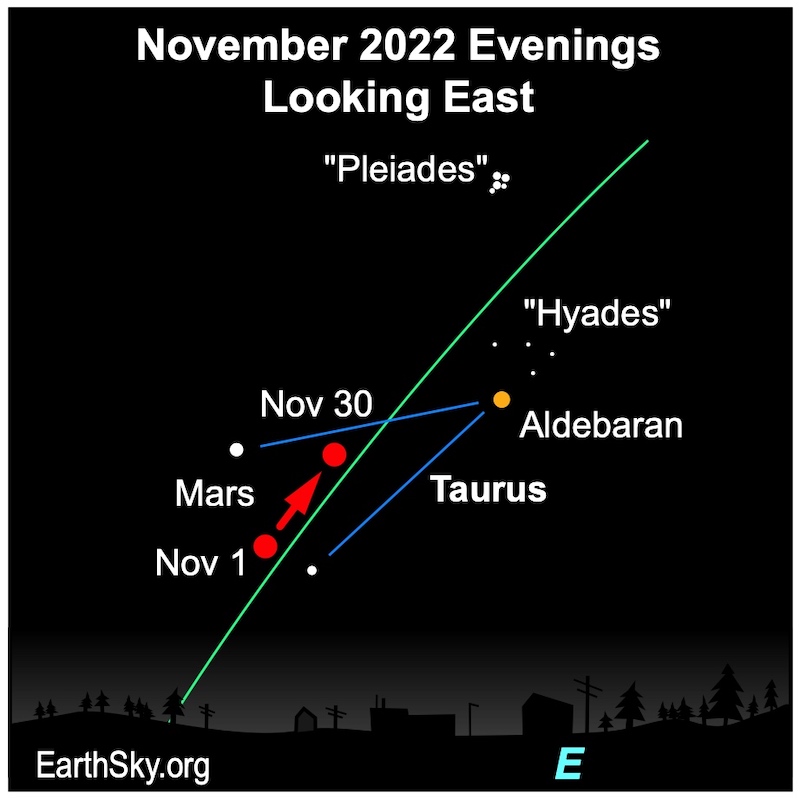
November evenings: Jupiter is brightest
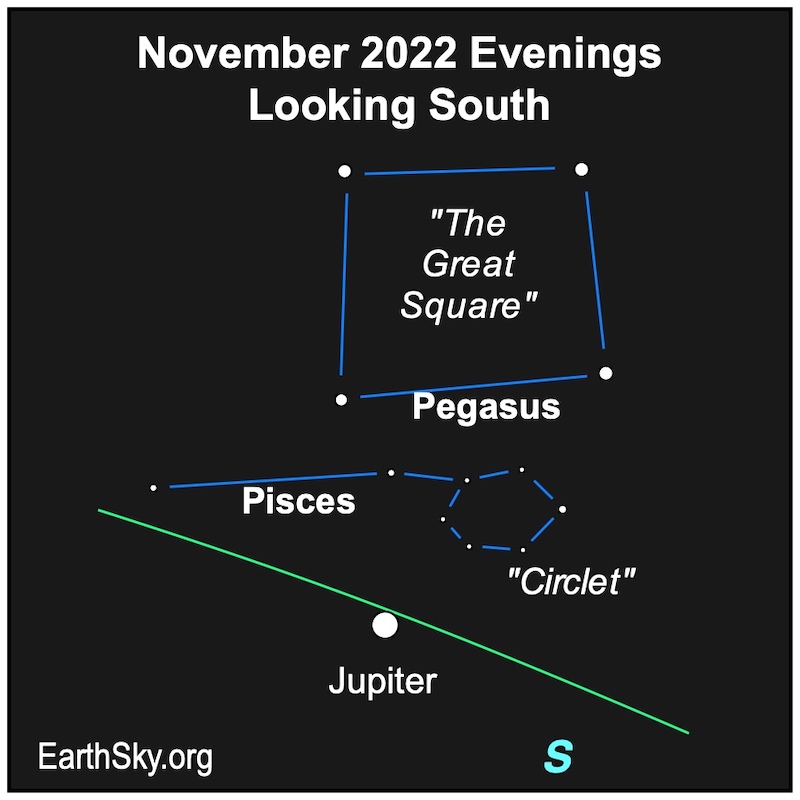
November evenings: Saturn is fainter, but golden
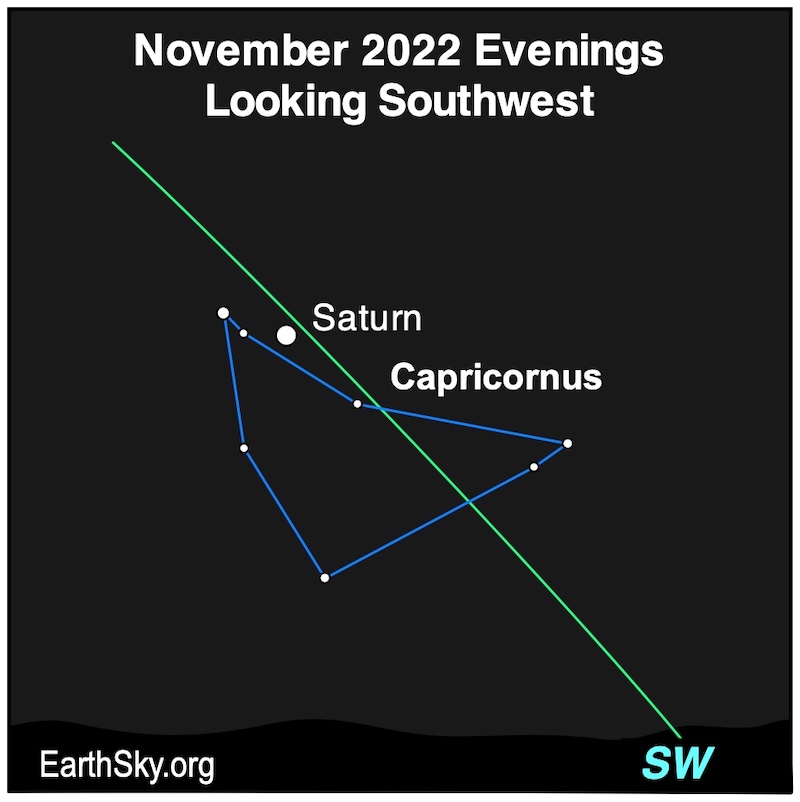
The instant of last quarter moon is 13:27 UTC (7:27 a.m. CST) on November 16
November 20 and 21 mornings: Moon near Spica
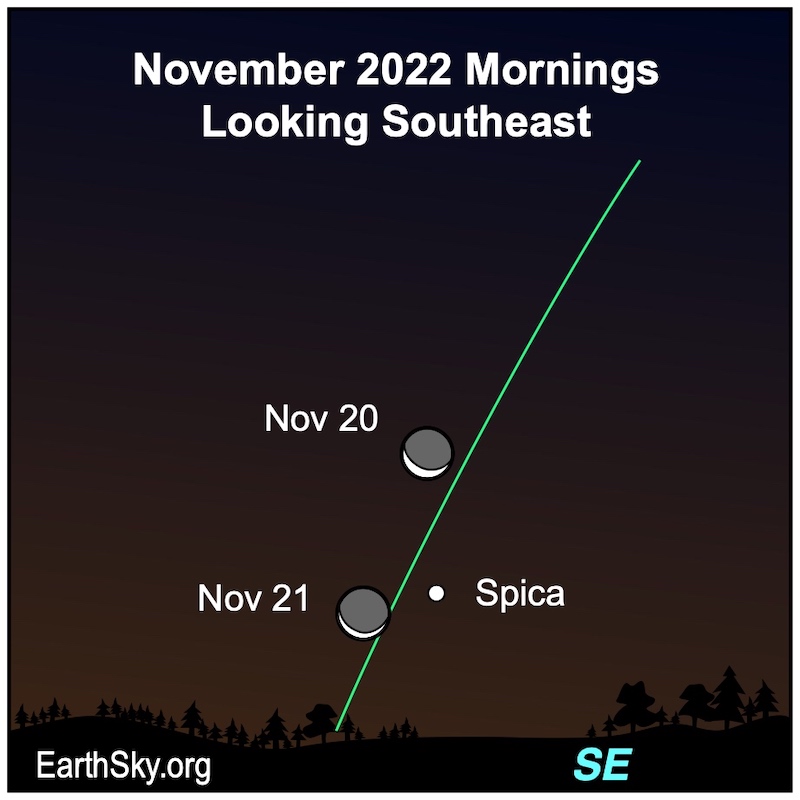
The instant of new moon is 22:57 UTC (4:57 p.m. CDT) on November 23.
November 25 and 26 evenings: Moon near Teapot
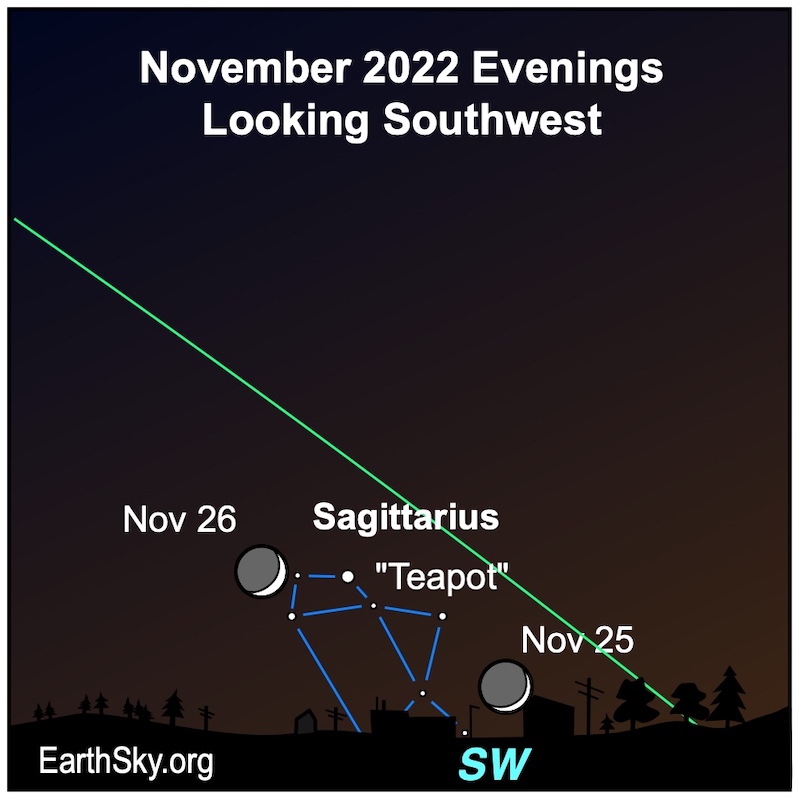
November 28 and 29 evenings: Moon near Saturn
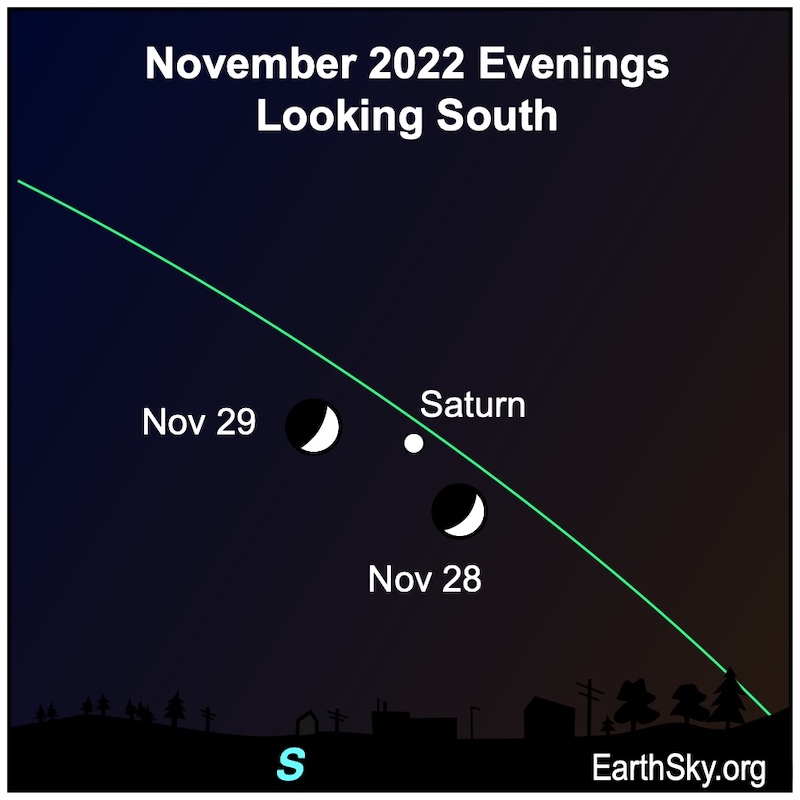
The instant of 1st quarter moon is 14:36 UTC on November 30 (8:36 a.m. CST)
November-December 2022 heliocentric solar system planets
The sun-centered charts below come from Guy Ottewell. You’ll find charts like these for every month of 2022 here, in his Astronomical Calendar. Guy Ottewell explains:
In these views from ecliptic north, arrows (thinner when south of the ecliptic plane) are the paths of the four inner planets. Dots along the rest of the orbits are five days apart (and are black for the part of its course that a planet has trodden since the beginning of the year). Also, semicircles show the sunlit side of the new and full moon (vastly exaggerated in size and distance). Additionally, pairs of lines point outward to the more remote planets.
Phenomena such as perihelia (represented by ticks) and conjunctions (represented by lines between planets) are at dates that can be found in the Astronomical Calendar. Likewise, Gray covers the half of the universe below the horizon around 10 p.m. at mid-month (as seen from the equator). The zodiacal constellations are in directions from the Earth at mid-month (not from the sun).
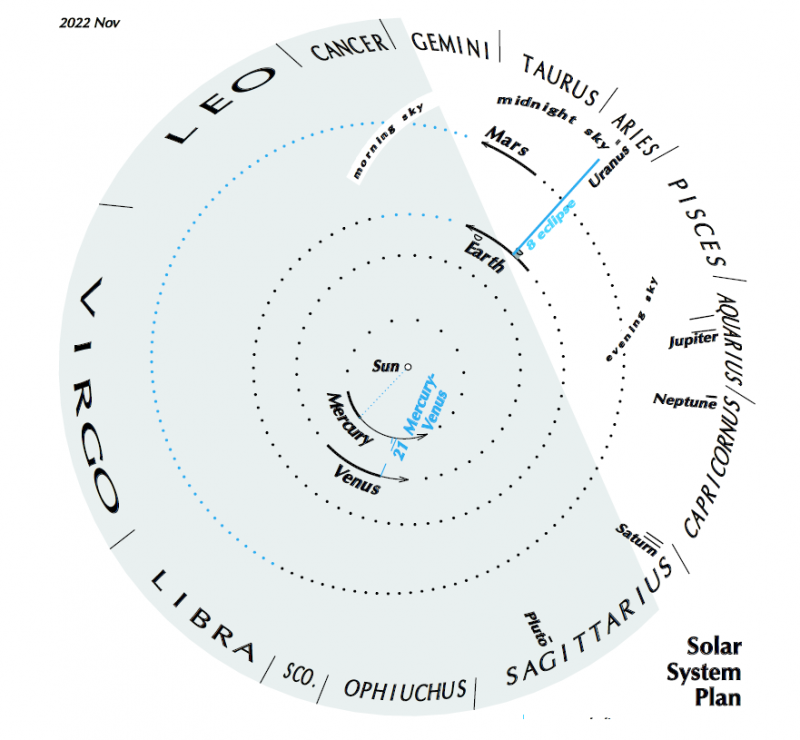
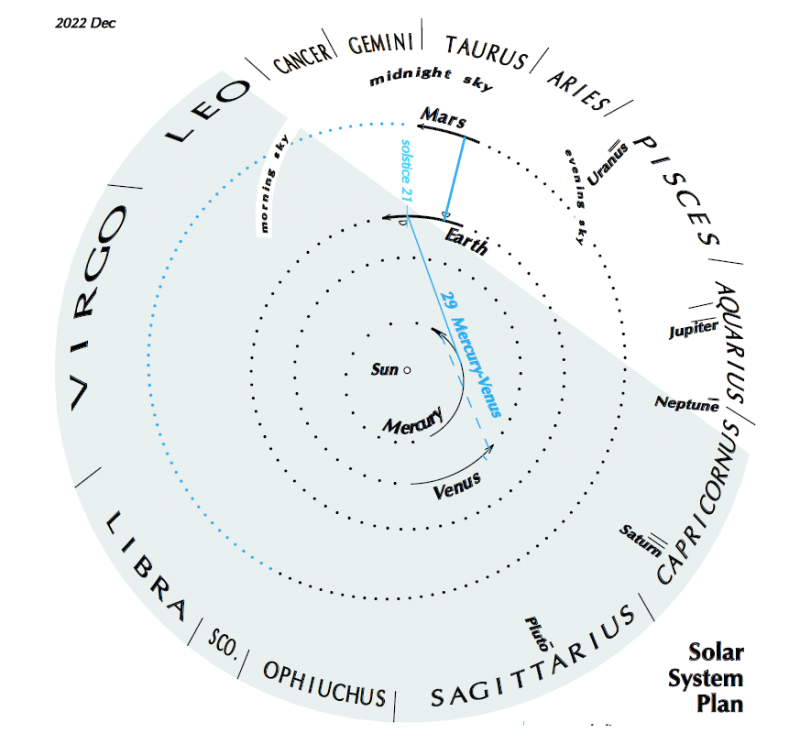
Some resources to enjoy
Don’t miss anything. Subscribe to daily emails from EarthSky. It’s free!
Visit EarthSky’s Best Places to Stargaze to find a dark-sky location near you.
Post your own night sky photos at EarthSky Community Photos.
Translate Universal Time (UTC) to your time.
See the indispensable Observer’s Handbook, from the Royal Astronomical Society of Canada.
Visit Stellarium-Web.org for precise views from your location.
Visit TheSkyLive for precise views from your location.
Great resource and beautiful wall chart: Guy Ottewell’s zodiac wavy chart.


Bottom line: In November, the morning planet is Mars. In the evening, the gas giant planets Saturn and Jupiter dominate the southern sky as night falls, with bright Mars rising in mid-evening.
Help EarthSky keep going! Donate now
The post Visible planets and night sky November 2022 first appeared on EarthSky.
0 Commentaires